If you ask an arachnophile, "Are spiders dangerous to humans?" They will likely respond that most spiders are not harmful to humans and play a crucial role in controlling insect populations.
However, there are a few species of spiders that can deliver venomous bites, which may require medical attention if bitten.
Do you know that the Goliath birdeater (Theraphosa blondi), found in the rainforests of South America, is one of the largest spiders in the world? It can have a leg span of up to 11-12 inches (about the size of a dinner plate) and can weigh over 6 ounces.
This was about size, but now let's get to the real thing: the Venom. Do you know which is the most deadly spider in the world? If not, then you've landed in the right place.
In this article, we'll cover the top 9 of the world’s most venomous spiders whose one small bite can be deadly to humans.
List of the Most Venomous Spiders in the World
The following list of spiders is recognised for their potent venom and potential danger to humans, with varying levels of aggression and symptoms associated with their bites.
| Spider Name | Scientific Name | Where Found | Height/Weight | Other Information |
| Sydney Funnel-Web Spider | Atrax robustus | Australia | ~1-2 inches long | Highly potent venom; male venom is 4–6 times stronger than female; antivenom available since 1981. |
| Brazilian Wandering Spider | Phoneutria spp. | South America | ~1.5–2 inches long | Guinness World Record holder for most venomous spider; neurotoxic venom; aggressive defense posture. |
| Black Widow Spider | Latrodectus spp. | Worldwide | ~0.5–1 inch long | Venom 15 times stronger than rattlesnake; causes muscle pain and breathing difficulty. |
| Redback Spider | Latrodectus hasselti | Australia | ~0.4 inches long | Similar to black widow; venom causes severe pain and systemic symptoms. |
| Brown Recluse Spider | Loxosceles reclusa | United States | ~0.3–0.7 inches long | Venom causes necrosis and systemic symptoms; bites rarely fatal. |
| Chilean Recluse Spider | Loxosceles laeta | South America | ~0.3–0.7 inches long | Severe necrosis and systemic effects; bites may take months to heal. |
| Sicarius Spider | Sicarius spp. | South America, Africa | ~0.6–2 inches long | Tissue-destroying venom; ambush predator that buries itself in sand or soil. |
| Mouse Spider | Missulena spp. | Australia | ~0.4–1 inch long | Less aggressive than funnel-web spiders; venom can cause headaches and numbness. |
| Tarantula Wolf Spider | Lycosa tarantula | Southern Europe | ~1–2 inches long | Rarely bites humans; venom causes irritation but is not highly dangerous. |
Source: Discover Wildlife
1) Sydney Funnel-web Spider (Atrax robustus)
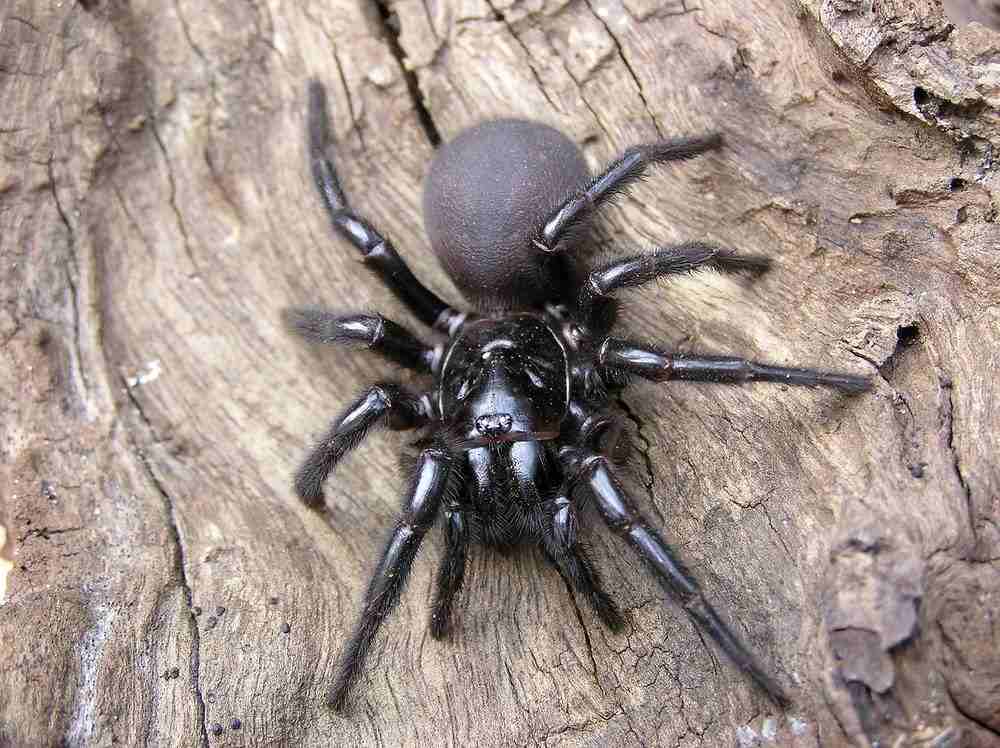
Source: Live Science
- Location: Eastern Australia, particularly around Sydney.
- Venom: Contains a powerful neurotoxin that can lead to severe symptoms such as muscle spasms, breathing difficulties, and cardiac arrest. The venom's potency varies, with male spiders being significantly more venomous than females.
- Fatalities: Historically responsible for 13 confirmed human deaths before the development of an effective antivenom in the 1980s. Since then, no fatalities have been reported due to timely medical intervention.
- Behaviour: Highly aggressive and known to bite multiple times when threatened. They inhabit moist environments like forests and urban gardens.
2) Brazilian Wandering Spider (Phoneutria spp.)
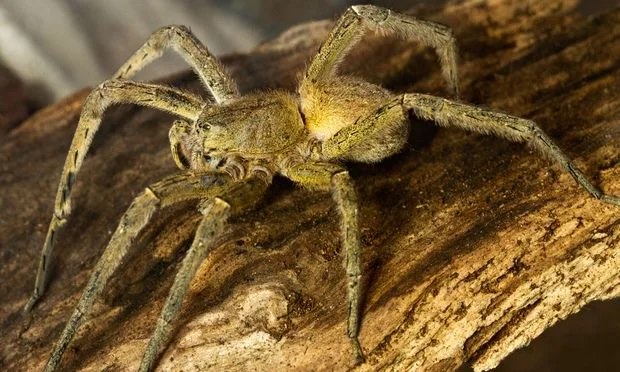
Source: The Guardian
- Location: Central and South America, often found in banana plantations.
- Venom: Neurotoxic, affecting the nervous system and causing symptoms such as salivation, irregular heartbeat, and intense pain.
- Fatalities: Bites can be serious, particularly in children, but only a small percentage require antivenom treatment. The spider is known for its aggressive behaviour.
- Behaviour: Often found hiding in dark, moist places, these spiders are known for their ability to deliver a painful bite without injecting their full venom load.
3) Black Widow Spider (Latrodectus mactans)
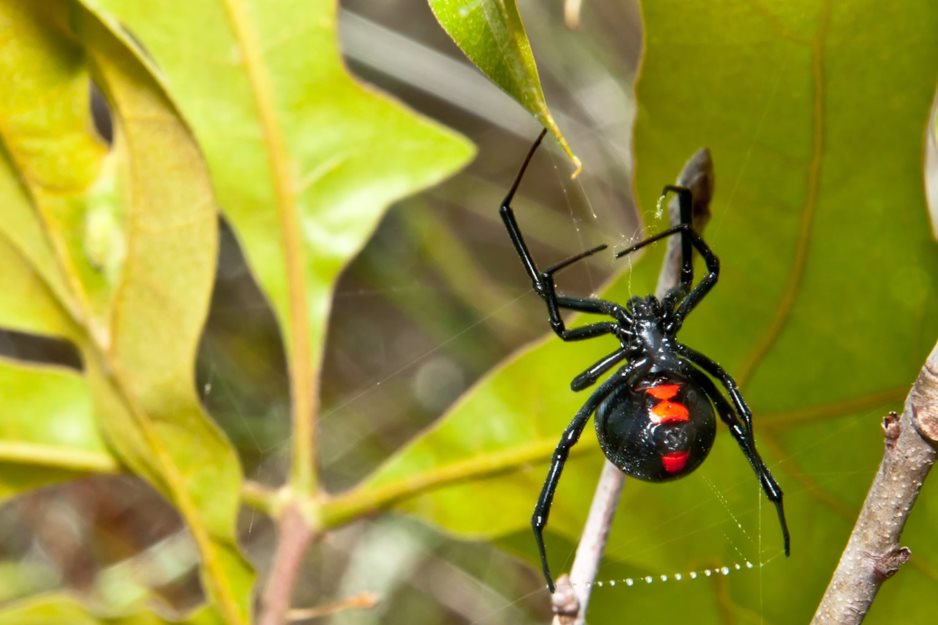
Source: National Geographic Kids
- Location: Found worldwide, especially in North America.
- Venom: Contains a neurotoxin that can cause severe pain, muscle cramps, nausea, and mild paralysis of the diaphragm, making breathing difficult.
- Fatalities: Deaths are rare due to effective medical treatment; bites are more dangerous for children and the elderly.
- Behaviour: Typically not aggressive, they prefer to hide in dark corners and are known for their distinctive red hourglass marking.
4) Redback Spider (Latrodectus hasselti)
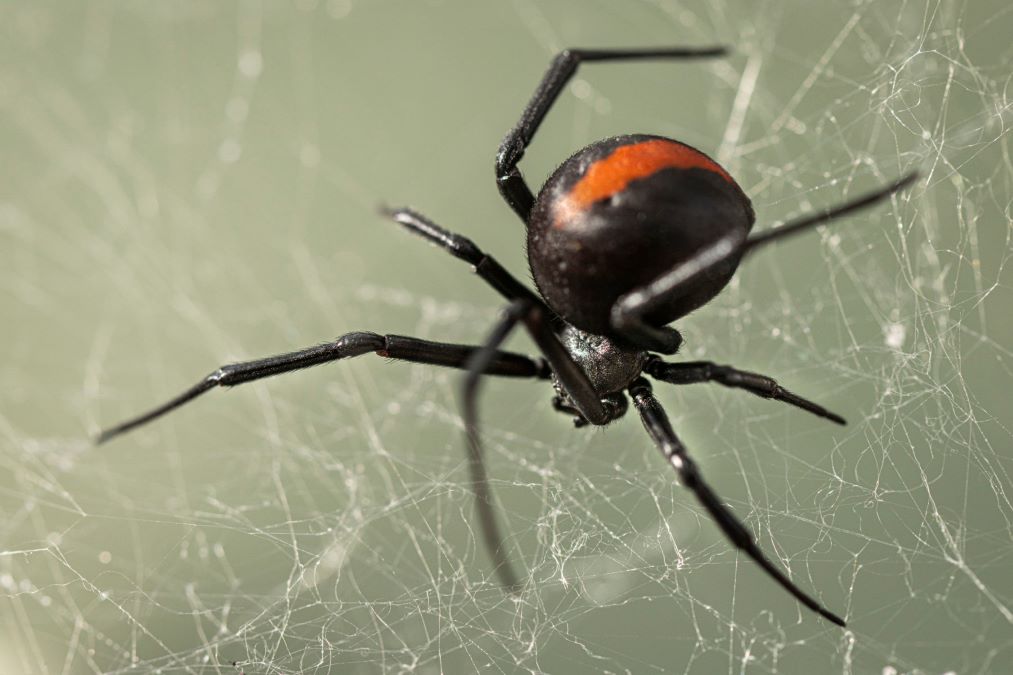
Source: Plant & Food Research
- Location: Australia, particularly in urban areas.
- Venom: Similar to that of the black widow, it contains neurotoxins that can cause severe pain, muscle weakness, nausea, and respiratory failure.
- Fatalities: Rare due to the availability of antivenom; only one death has been reported since the antivenom was developed.
- Behaviour: Typically bites when disturbed; the spider is recognisable by its distinctive red stripe on its back.
5) Brown Recluse Spider (Loxosceles reclusa)
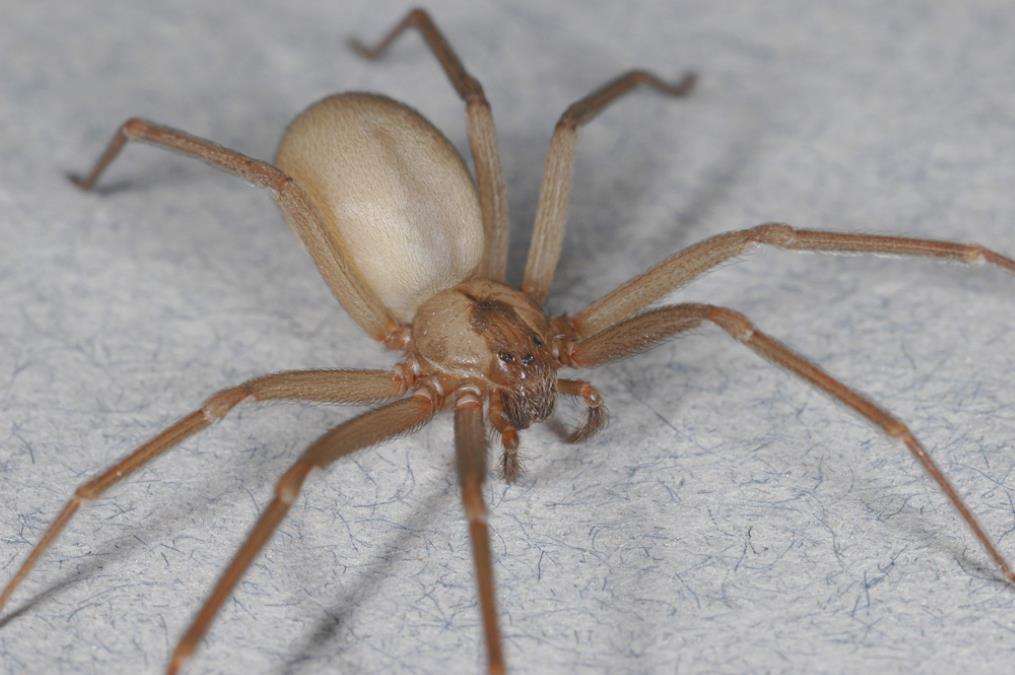
Source: Zocalo Public Square
- Location: Central and southern United States.
- Venom: Cytotoxic, leading to necrosis (tissue death) at the bite site. Symptoms can include severe pain and the development of large skin ulcers.
- Fatalities: Rare, but complications from bites can lead to serious health issues such as gangrene.
- Behaviour: Generally non-aggressive, they bite only when provoked or trapped. They prefer dark, secluded areas like attics and basements.
6) Chilean Recluse Spider (Loxosceles laeta)
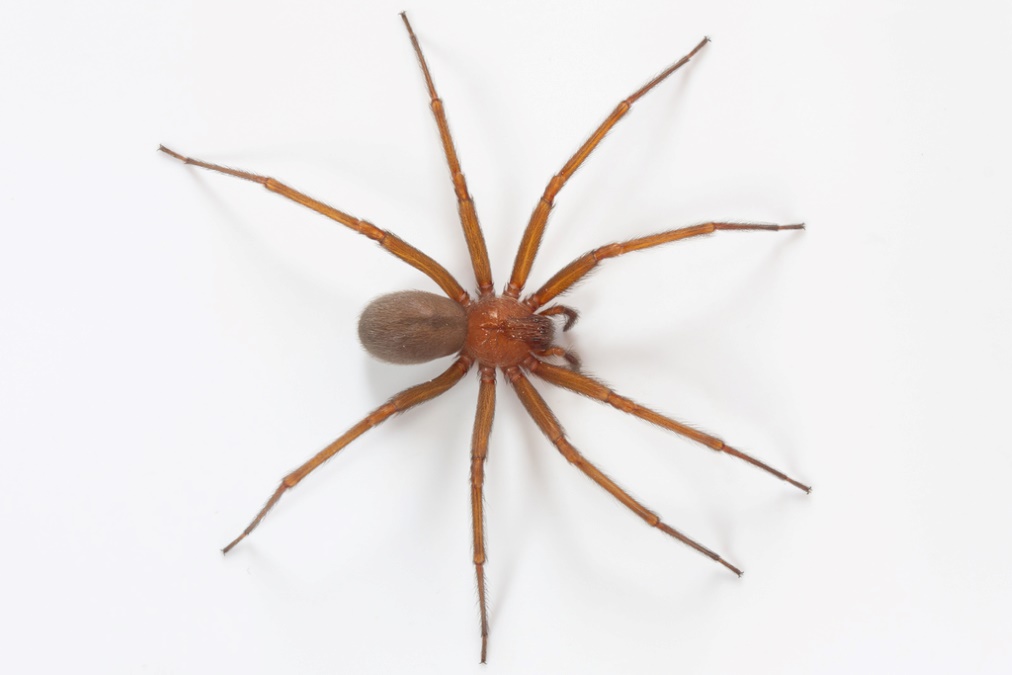
Source: iNaturalist
- Location: Native to South America, particularly Chile, but has been reported in parts of the United States.
- Physical Characteristics: Small to medium-sized spider, typically 1.5 to 2.5 cm in body length. It has a distinctive violin-shaped marking on its cephalothorax.
- Venom: Contains cytotoxins that can cause severe necrosis at the bite site. Symptoms can range from mild irritation to severe skin damage and systemic reactions.
- Effects on Humans: Bites can lead to significant tissue necrosis and, in rare cases, fatalities. The CDC reports that around 3-4% of bites can result in severe complications. Wounds may take months to heal and often leave scars.
- Behaviour: Generally reclusive, preferring dark, undisturbed areas like attics and basements. They are not aggressive and usually bite only when provoked.
7) Six-eyed Sand Spider (Sicarius spp.)
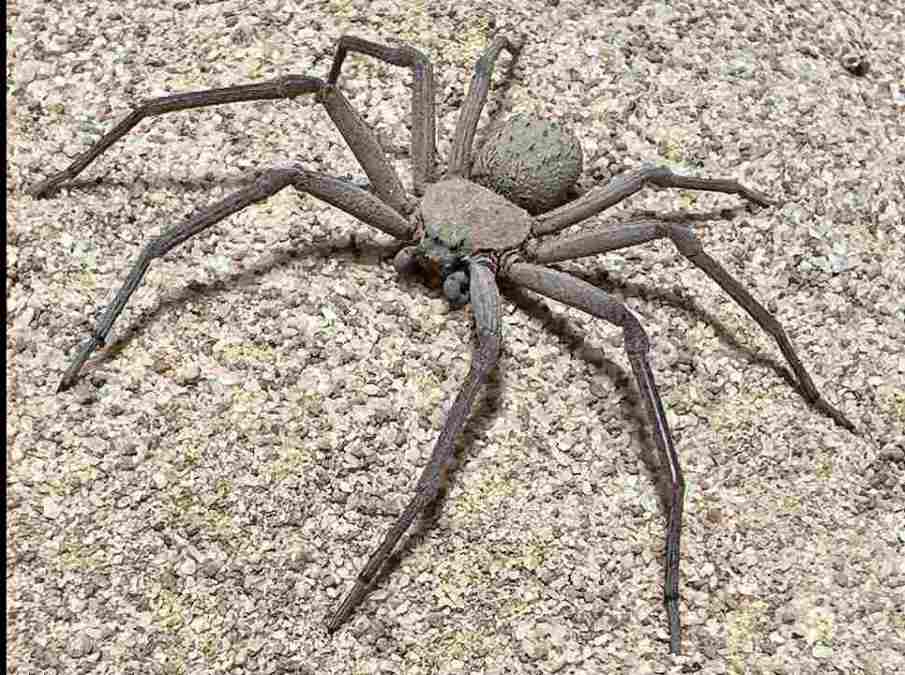
Source: YouTube
- Location: Found primarily in the deserts and arid regions of southern Africa, including Namibia.
- Physical Characteristics: Medium-sized, with a body length of 8 to 15 mm. It has six eyes arranged in three pairs and a flattened body that aids in camouflage.
- Venom: Highly potent, believed to cause haemorrhaging, blood clotting, and significant tissue damage. Its venom is considered more destructive than that of recluse spiders.
- Effects on Humans: There are few confirmed human bites, but the venom is thought to be capable of causing severe necrotic lesions. No antivenom is available, and bites can lead to serious health complications.
- Behaviour: Primarily ambush predators, they bury themselves in the sand and wait for prey to come close. They are elusive and rarely encountered by humans.
8) Mouse Spider (Missulena spp.)
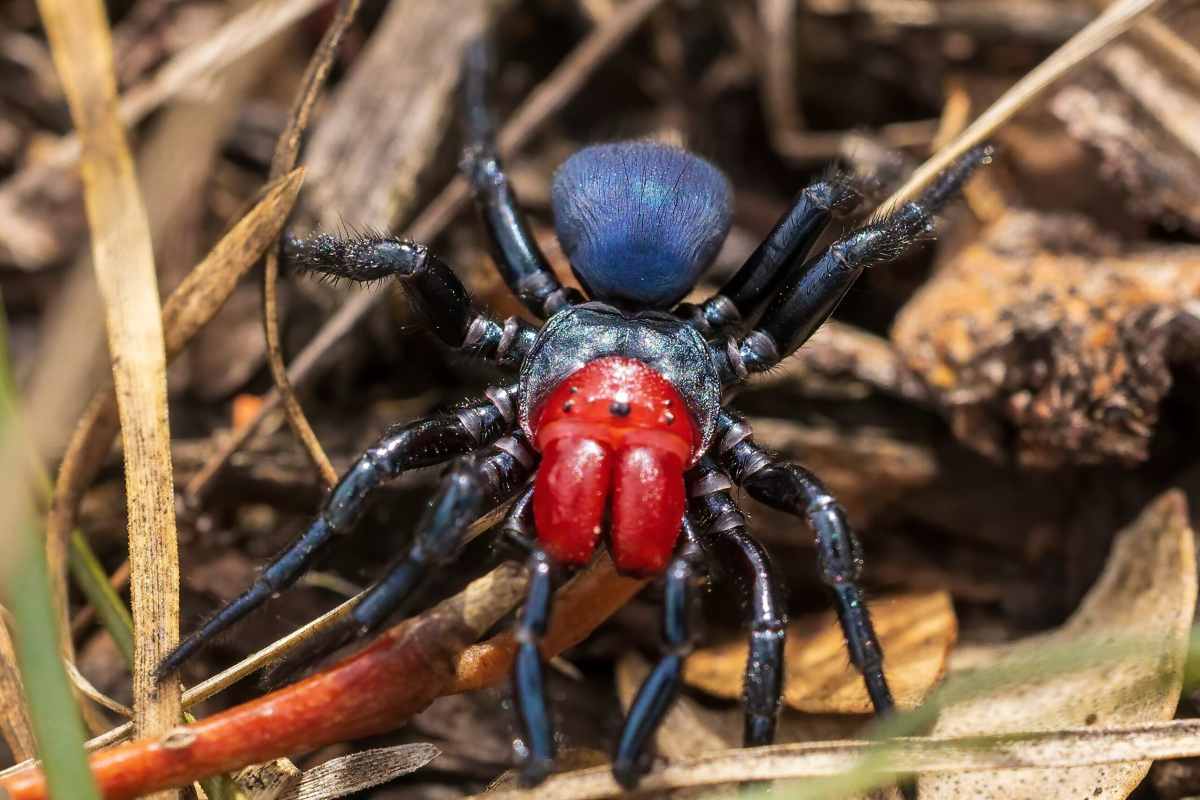
Source: Australian Geographic
- Location: Found throughout mainland Australia, with one species (M. tussulena) in Chile.
- Physical Characteristics: Body length ranges from 10 mm to 35 mm; Stout black spiders with a bulbous head and jaws; Abdomen is either uniform black, dark blue, or black with a light grey/white patch; Females are larger and stockier, while males may have bright red or orange jaws; Spinnerets are short and button-like; the carapace is smooth and shiny.
- Venom: Contains highly toxic venom, potentially as dangerous as that of the Sydney Funnel-web Spider; Male venom affects presynaptic transmitter release, similar to Funnel-web Spider venom; Funnel-web spider antivenom is effective against mouse spider bites.
- Effects on Humans: Bites are painful but rarely dangerous; serious envenomation is uncommo; Symptoms may resemble those caused by Funnel-web Spider bites; initial treatment should follow similar protocols.
- Behaviour: Lives in silk-lined burrows with trapdoors; burrows may be up to 55 cm deep; Females remain in burrows, while males wander in search of mates; Aggressive posture when threatened, rearing up on hind legs; Preys on insects and small animals; primary predators include wasps and centipedes
9) Tarantula Wolf Spider (Lycosa tarantula)
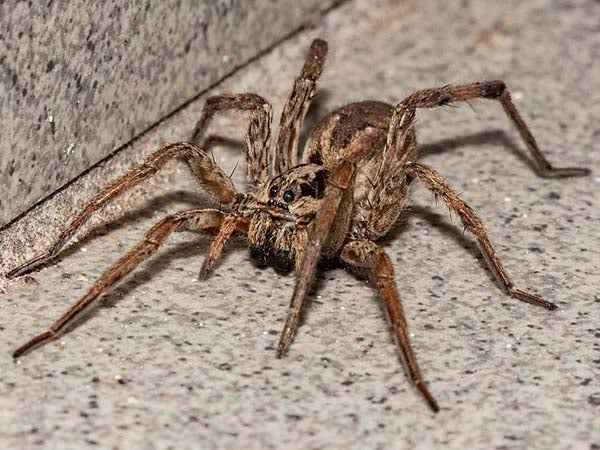
Source: Moyustore
- Location: Found in Southern Europe, particularly in Mediterranean regions like Italy and France.
- Physical Characteristics: One of the largest wolf spiders, reaching up to 30 mm in body length; Brown or gray coloration with distinctive markings for camouflage; Builds burrows up to 40 cm deep, often topped with a turret made of debris and silk.
- Venom: Contains small disulfide-rich neurotoxins and proteins such as hyaluronidases and cysteine-rich secretory proteins; Venom composition varies between males and females; primarily used for prey capture rather than defence.
- Effects on Humans: Bites are not highly dangerous; venom causes mild irritation or localised pain; Historically associated with "tarantism," though this was likely due to misidentification with Black Widow bites.
- Behaviour: Ambush predator that does not build webs but relies on venom for prey capture; Lives in burrows lined with silk; uses a turret structure for hunting efficiency; Solitary and non-aggressive toward humans unless provoked
Comments
All Comments (0)
Join the conversation